NERD$ Lessons Learned
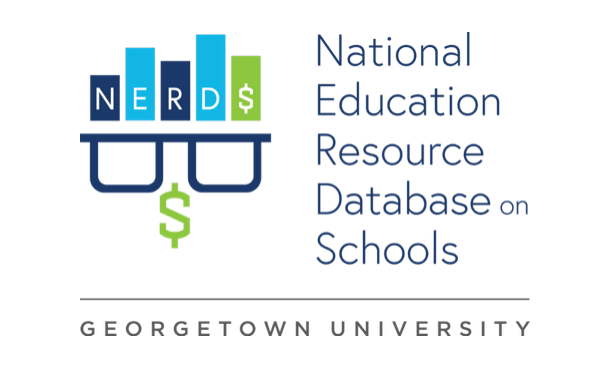
Why NERD$? For decades, large financial datasets captured only district-level spending data. But districtwide averages, whether for performance, spending, teacher salaries, or other data points, mask variation at the school level within districts. As with many other industries and policy areas, the use of aggregated and/or average data in education finance obscures the factors that may […]
ELab-U: Smart Money for School Leaders

Smart Money for School Leaders is a collection of education finance instructional modules developed by Edunomics Lab, Georgetown University designed to provide hands-on finance skills for school leaders.
30-Min Webinar: How can districts measure learning loss recovery costs?

In this webinar we share “The Calculator,” a new tool that estimates lost learning time in more than 8,000 school districts and how much a district would need to invest to get students back on track.
Fewer students are attending public schools. What does that mean for the future of school district finances?

This analysis compares the amount of money school districts will receive from the two largest federal COVID relief packages (ESSER II and III) versus their projected budgetary declines due to enrollment losses.
What will MoEquity mean for district budgets?
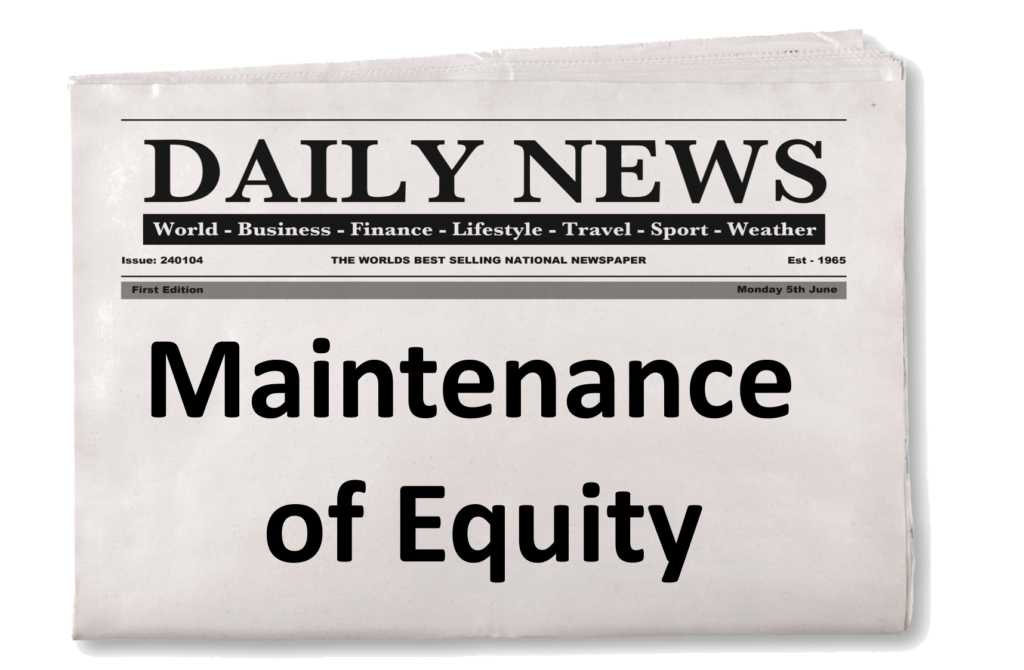
In this webinar Marguerite Roza and Chad Aldeman discuss the new guidance for the maintenance of equity provision and what it would mean for districts faced with implementing it.
School Finance for Equity and Innovation
On December 9, 2020 Marguerite Roza participated in California Charter Schools Association’s 2020 Education Symposium. She discussed leveraging data to lead efforts to improve equity and productivity, and how leaders can enable systems to navigate the financial turmoil ahead.
Spending patterns, equity and achievement in districts using weighted student funding

Edunomics Lab’s findings from a three-year, Institute of Education Sciences study titled “How do Spending Patterns Change with Weighted Student Funding (WSF), and What’s Happening to Equity and Achievement, Particularly for Poor and At-Risk Students?”
The financial landscape and what it means for public education

In this series of 30-minute webinars, Marguerite Roza shares what we are learning as the financial outlook for public education evolves and implications for states and districts as they make financial plans for the coming weeks and year.
Webinar: Financial Turmoil for Public Education: Projections, stimulus, and what superintendents and principals can expect

Webinar with the National Association of Elementary School Principals and AASA, The School Superintendents Association, on what the financial turmoil will mean for public education and what superintendents and principals should expect.
Engaging principals in school-level financial data to boost student achievement

During the Council of Great City School’s fall conference in 2019, Cleveland Metropolitan School District, and Edunomics Lab shared insights using school-by-schools spending data and a framework for engaging school leaders in leveraging dollars for the greatest outcomes possible.
Webinar: The Changing Role of Education Finance Leadership
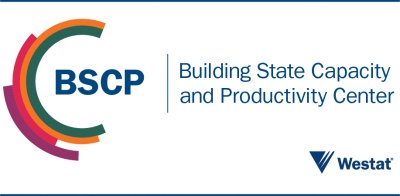
This webinar explores connections and opportunities with ESSA’s financial transparency requirement, the new Supplement-not-Supplant requirement for a district “resource allocation methodology” and “resource allocation reviews,” and what each means for states and districts.
Webinar: Taking Stock as SEAs Begin Releasing Per-Pupil Spending Data

In this webinar, Marguerite Roza and Katie Hagan examine school-by-school expenditures in states where data are available. They share how leading states are incorporating financial transparency data in school and district report cards and discuss what can be learned from these early adopters.
New Education Department guidance on supplement-not-supplant: Sorry not sorry

In this Brookings Chalkboard blog post, Marguerite Roza discusses new U.S. Department of Education guidance on monitoring the “supplement-not-supplant” (SNS) provision of Title I.
Dear districts: These are the glory days. Are you ready for tomorrow’s financial pain?

In this commentary, Marguerite Roza writes that districts have a chance to strategically prepare for the inevitable economic downturn by reducing recurring costs and resisting more hiring; shifting budget choices to schools, allowing them to protect what matters most; and building trust around money and engaging community in tradeoffs.
Webinar: An Introduction to Student-Based Allocation

Designed for district and community leaders, this webinar shares how student-based allocation (SBA) works, why districts use SBA, what SBA formulas look like, and what steps and resources districts can take and tap to move toward SBA.
Equipping School Leaders to Spend Wisely

In this article in the National Association of State Boards of Education journal, The Standard, Marguerite Roza writes that financial transparency presents state boards of education with a timely opportunity to turn the tide on local leader training.
Interstate Financial Reporting

Interstate Financial Reporting (IFR) was created by states, for states, to meet the financial data reporting requirement under ESSA—and maximize the value of their efforts. Based on a set of voluntary, minimal reporting criteria, IFR is designed to produce data that have common meaning and can be used to make valid, apples-to-apples comparisons of school-level per-pupil expenditures across states nationwide.
Taking stock of California’s weighted student funding overhaul: What have districts done with their spending flexibility?

In 2013 California adopted the Local Control Funding Formula (LCFF) to drive more resources to students with higher needs, create more spending flexibility, and let districts decide how to spend substantial new dollars. Our analysis examines financial data from nearly all California school systems to clarify how their spending choices changed in the first three years of the new state funding law.
Did districts concentrate new state money on highest-needs schools? Answer: Depends on the district.

Our analysis of eight districts takes a first look at whether CA districts did, under LCFF, allocate a larger share of their new funds to their highest-needs schools.
California’s weighted student funding formula: Does it help money matter more?

As California’s LCFF enters Year 5 of implementation, this brief analyzes whether we are seeing an improved relationship between spending and outcomes.
Funding Student Types: How states can mine their own data to guide finance policy on high-needs students

To help states design effective funding policies to serve high-needs students, this brief by Marguerite Roza helps states ask the right questions, tap their own data, and analyze funding in relation to student outcomes.
Analyzing early impacts of California’s Local Control Funding Formula

In 2013, California adopted the Local Control Funding Formula, shifting control over spending decisions from the state legislature to local school districts and eliminating many state-imposed spending rules. This three-part series analyzes early impacts of the LCFF, one of the nation’s largest weighted student funding (WSF) overhauls to date.
College credit in high school: Doing the math on costs

Many policymakers see providing college credit in high school as a money saver, but little research has examined that belief. This brief helps fill the gap, investigating in three states the costs of taking college classes in high school compared to attaining credit after high school.
Student Based Allocation District Collaborative Meeting

Edunomics Lab hosts a monthly virtual meeting of district finance leaders to share knowledge and solve challenges around student-based allocation practice and collectively produce research that districts need and want. These resources are from an in-person convening of the SBA Network plus other districts interested in learning more.
Four Approaches to Assigning Costs to Central Levels vs. School Levels When Calculating Per-Pupil Expenditures

With ESSA requiring states to collect and report school-level per-student expenditures, state education agencies are considering setting statewide rules for assigning expenditures to the district or school level. In this brief, we map four approaches states can take and weigh benefits and considerations for each.
School Level Finance Survey Converter Tool

This downloadable tool helps states combine data from two existing federal surveys to calculate school-level per-pupil expenditures for all schools and districts in their survey files and meet the new financial transparency requirement under the Every Student Succeeds Act.
Webinar: What does the ESSA financial transparency requirement mean for districts?

This webinar provides an overview of the financial transparency requirement in the Every Student Succeeds Act, highlight lessons learned from states working toward meeting the requirement, and provide a district lens for thinking about the opportunities this new data can provide.
Financial Transparency & Equity

The Every Student Succeeds Act (ESSA) requires all states to collect and report per-pupil expenditures down to the school level. These four videos may help state education agencies better understand the equity implications of financial transparency as they define and tackle their own financial transparency goals.
Financial Transparency Reporting Requirement: Where to start

In this brief we describe our work with 22 state education agencies to identify data readiness to meet the financial transparency reporting requirement under the Every Student Succeeds Act (ESSA) and outline the inventory processes so other states can identify their own next steps to meet the requirement.
With New Data, School Finance Is Coming Out of the Dark Ages

In this blog and podcast, Marguerite Roza explains how a sleeper provision in the Every Student Succeeds Act (ESSA) will serve up a motherlode of new school-level financial data, offering an unprecedented opportunity to be better equipped to tackle some of education’s most pressing issues.
Productivity Improvements Paper Series

These five Rapid Response briefs model the costs of productivity improvements in K-12 education, including changes in staffing ratios, the impact of late-career teacher pay raises on pension debt, and paying the best teachers more to teach more students.
The Equity Problem in Teacher Pensions

This brief shows how high-minority schools receive fewer dollars in pension wealth than low-minority schools within the same district, and makes the case for pension dollars to be more transparent and included in discussions around K-12 spending equity.
New Era of School Finance
In 2016 we convened leading authorities to discuss the complexities of education finance in light of the new Every Student Succeeds Act. Watch Marguerite Roza’s research presentation, US Secretary of Education Arne Duncan’s keynote, and an expert panel discussion of the shifting roles in education finance decisions.
Are public universities neglecting in-state students?

Marguerite Roza responds to an online “Room for Debate” conversation hosted by the New York Times, arguing that chasing after nonresident students threatens the very nature of public universities as institutions that serve the state.
Productivity is sometimes seen as a dirty word in education
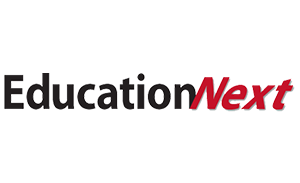
This article explores how school systems can improve productivity even when so much of what matters—the human variables and relationships in student learning—can’t be centrally managed and scaled across schools.
Advancing System Productivity Webinar Series
Edunomics Lab, in partnership with Council of Chief State School Officers and the Building State Capacity and Productivity Center, convened a Community of Practice to support a group of leaders in all states interested in developing a state-specific framework and strategy set related to the SEA’s role in increasing productivity. This series of five webinars is designed to help Regional Comprehensive Centers support state education agency (SEA) leaders as they explore how they can better support districts and schools to operate in a more productive way.
Meeting the ESSA Financial Transparency Reporting Requirement

On February 9, 2017 nearly 100 state and district leaders representing 36 states met in Washington, D.C. to explore the opportunities and work ahead to meet the financial transparency reporting requirement in ESSA. Available presentations are linked.
The Smart Money: Designing a school budget to get the most for your school dollar
In this hands-on workshop presented at NAIS national conference in March 2017 school leaders dove into the math of school resource allocation. Dr. Roza shared innovative financial strategies and how leaders could apply the concepts to their own school context.
Breaking tradition: A fixed-dollar pay raise strategy that benefits teachers and school districts

In this paper we examine both the degree to which pay systems for teachers are more heavily back-loaded than for many other professions and the ramifications of this steep salary curve for teachers, states and school districts.
Highly Productive Rural Districts: What is the Secret Sauce?

In this paper we identify some common themes that makes some remote rural districts “productivity superstars” and describe steps states can take to encourage and support district productivity.
How the teacher pay raise formula could worsen Seattle’s inequity

In this oped Marguerite Roza describes one critical issue underlying the fall 2015 Seattle Public Schools teachers’ strike that neither the Seattle School District nor the Seattle Education Association.
Promoting Productivity: Lessons from Rural Schools

In this essay addresses the assumption that rural districts are less productive than their urban or suburban peers by discussing rural districts can “beat the odds” by increasing student results without increasing per-pupil expenditures.
Turning a Benefits Conundrum into a Potential Opportunity for Teachers and Students

This analysis shows how a longer work year could increase teachers’ annual salaries and improve student outcomes.
Teachers’ Pensions and the Overgrazed Commons
Commentary by Marguerite Roza and Michael Podgursky on how big raises to teachers nearing retirement is a recipe for letting pension debt get out of control.
Is spending more on education the best way to improve schools and teaching?

Marguerite Roza’s response to the NY Times Room for Debate question ~ Is spending more on education the best way to improve schools and teaching?
Title I: Time to Get It Right

In this brief on the landmark federal law’s 50th anniversary, we offer five key principles to help policymakers revise Title I so that it fulfills its promise of augmenting funding for poor students.
Paying the Best Teachers More to Teach More Students

In this analysis we find how allowing our best teachers to teach more students in lieu of hiring additional staff could offer significant teacher bonuses. Findings are modeled state-by-state.
Innovation Amid Financial Scarcity: The Opportunity in Rural Schools

In this paper we explore spending and outcomes data of rural schools and highlight policy implications for states seeking improved outcomes for all their districts in the context of limited resources.
The Phantom Menace: Policies that Protect Districts from Declining or Low Enrollments, Drive Up Spending and Inhibit Adaptation

This paper examines the practice of states funding school districts for students who do not attend school there. Aimed at “protecting” districts from enrollment fluctuations, the practice drives up spending and inhibits adaptation.
Student Based Allocation 101
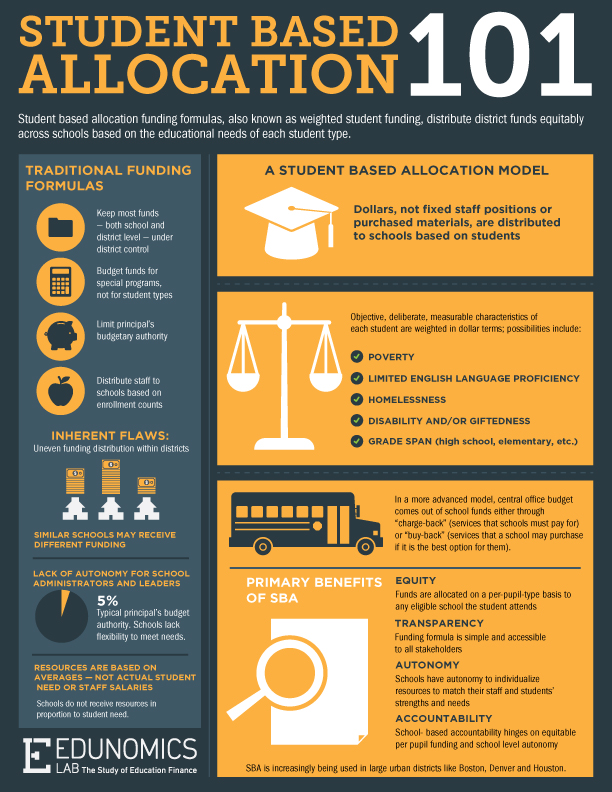
This one-page infographic explains what student-based allocation is, how it differs from traditional funding formulas and what its primary benefits are.
How Late-Career Raises Drive Teacher-Pension Debt

In this paper we model the impacts of late-term raises on teacher pension obligations showing that on average each dollar raise triggers $10 to $16 in new taxpayer obligations and provide suggestions to mitigate such impacts while improving incentives for early and mid career teachers.
Can decentralization improve Seattle schools?

In this op-ed, we argue that when the district decides what positions to fund in a school—rather than the school being empowered to decide based on its community priorities—it destroys goodwill and trust in the school system.
The Real Deal on K-12 Staffing

This analysis finds that staffing ratios across K-12 education have risen precipitously over several decades and, despite the impact of the Great Recession, remain at 2004 levels. A state-by-state comparison reveals large disparities across states.
Building SEA Productivity

In this presentation state education chiefs heard about a basic framework for leading the productivity challenge that includes building a productivity data infrastructure, prioritizing flexibility, aligning funds with students, incentivizing innovation, and leading the change.
Denver Public Schools: Making More Money Follow Students

This two-page brief outlines how Denver Public Schools has steadily increased the amount of district funds funneled through the student based allocation formula the school system adopted in 2008. In fiscal 2014, the district allocated $3235 million, or approximately 38 percent, of its $865 million budget.
What Portion of District Funds Follow Students?

Part of our ongoing study of budgets in systems implementing student based allocation, in this four-page brief we analyze 12 district budgets and find that the systems allocate roughly 24 to 42 percent of their funds through an SBA formula.
Boston Public Schools: Weighting What Matters

In this three-page brief, we analyze the share of district dollars Boston Public Schools funneled through its student based allocation formula, adopted in 2012. In fiscal 2014, the district allocated $3235 million, or approximately 38 percent, of its $865 million budget through the formula.
A State Information System to Support Improvements in Productivity

In this paper, we discuss how states can (and why they should) track and share school-level outcomes relative to school-level spending in their online information systems. Some schools are far more productive than others—getting better student results for less money—yet states are not yet routinely identifying such schools.
Funding for Student’s Sake: How to Stop Financing Tomorrow’s Schools Based on Today’s Priorities
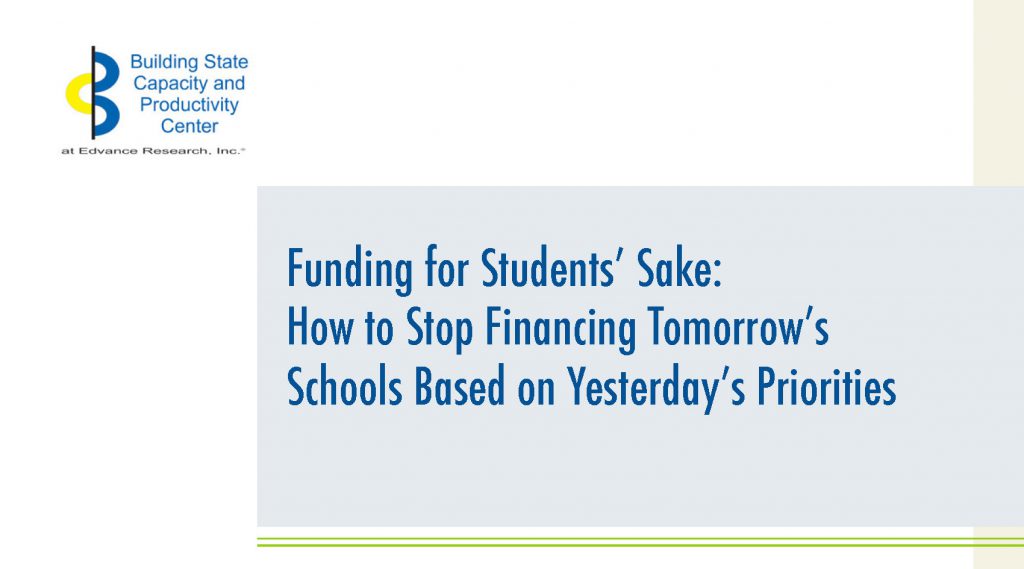
Most states make major changes in their allocation models only every two decades or so. In this paper, we explore how states can make the most of their redesign to get better outcomes for the money.
SEA of the Future: Building the Productivity Infrastructure

This publication introduces the “productivity infrastructure” the building blocks for an SEA committed to supporting productivity, innovation, and performance—from the state chief to the classroom.
Webinar: Training Principals for Budgeting at the School Level

In this webinar and presentation, we share seven key steps for principals to customize their use of resources based on student outcomes goals and needs. This includes concrete budget strategies and hands-on exercises to help principals understand and weigh cost and tradeoff scenarios.
How much money follows the student in WSF (aka SBA) districts?

In this presentation at the annual Association for Education Finance and Policy conference, we share our findings that the percent of total funds allocated via student based allocation (%SBA) ranges from a low of 23 percent to a high of 45 percent among ten urban school districts studied.
Rethinking Class Size to Expand Access to Best Teachers and Raise Pay

In this presentation at the annual Association for Education Finance and Policy conference, we share our exploration and cost modeling of cost-neutral options to raise teacher pay and give more students access to the best teachers.
Civic Vitality and Public Education Productivity: The Harbormaster Mayor

In this brief, we argue that mayors, as the person responsible for a municipality’s overall well-being, are uniquely positioned to identify and promote productive school models and advocate for all students, regardless of what type of school they attend.
Webinar: Building a State Information System to Support Improvements in Productivity
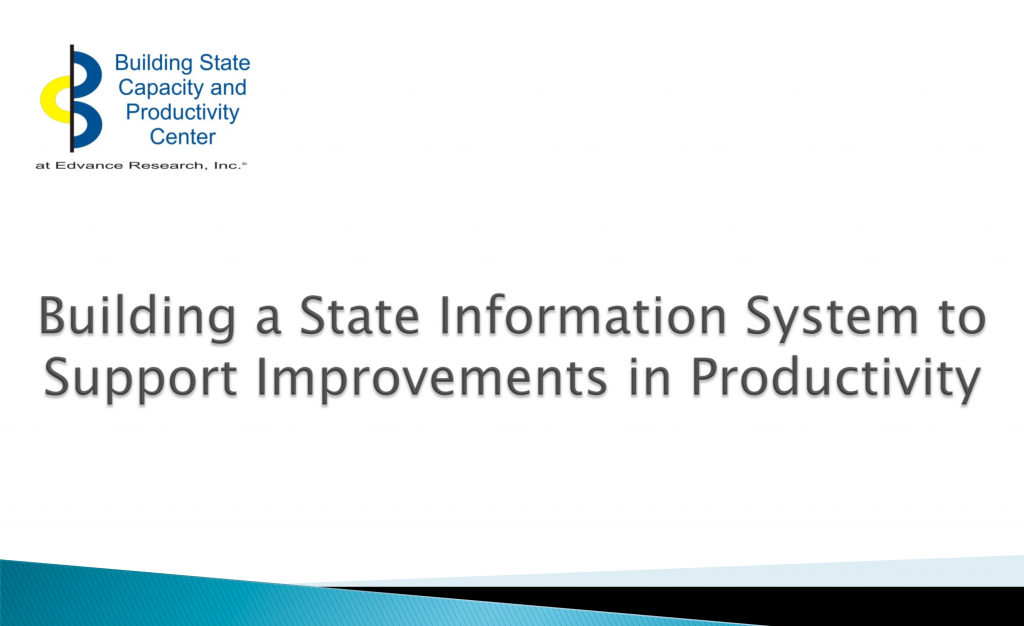
On February 26, 2016 Marguerite Roza conducted a webinar for state education agency leaders. This webinar explored how SEAs can build an information system designed to drive productivity – what data are needed, how to compile the data into useful resources for leaders at every level of education and how these stakeholders can use the data to drive decision making and advance productivity.
Taking Off the Heat

On January 29, 2014 Marguerite Roza shared risks and rewards that emerge when districts “decentralize” engagement around financial decisions to the school level with Portfolio School District Network members in Houston, TX.
VisionSBA: K-12 Financial Modeling Tool

VisionSBA provides education leaders with a unique outlook on spending by school level within a district, delivering insight into relative spending across schools adjusted for each school’s actual mix of students. This interactive tool developed by Marguerite Roza and Jim Simpkins answers the question: “How much does each school spend relative to all other schools in this district taking into account its particular mix of students?”
Options for NY State in an Era of Constrained Resources

At a public symposium of the NY Education Reform Commission, Marguerite Roza presented on “Maximizing Resources for Student and School Success.”
The SEA of the Future: Prioritizing Productivity

In this volume of The SEA of the Future, Marguerite Roza co-authored two essays examining how state leaders, challenged with having to make decisions on how to use limited resources, are faced with an uneasy zero-sum game: every dollar they put into one program is a dollar not spent in another.
Teacher Retirement Benefits: Defining a More Active Role for SEAs and Their Chiefs

In this essay from The SEA of the Future Volume 2, Marguerite Roza and Michael Podgursky look in depth at the startling long-term costs of educator pension systems and the counterproductive employment incentives embedded in these systems.
Leveraging Productivity for Progress: An Imperative for States

In this essay published in The SEA of the Future Volume 2, Marguerite Roza makes the case for why productivity is essential to improving outcomes for students.
The Case Against High School Sports

In this article published by The Atlantic, author Amanda Ripley draws on Marguerite Roza’s research as she describes the role of high school sports in the American education system, how current resource allocations favor sports over academics, and consequences as American students fall behind in international rankings.
The High Price of Excess Credits

This brief examines the cost of extra credits earned by students in California, Georgia, and New York, and opportunities for state and university leaders to maximize degree attainment with constrained resources.
More Students, More Degrees, More Dollars

Cuts to state support for higher education have prompted some universities to raise tuition, admit more out-of-state students, and increase enrollment to close budget gaps. This analysis compares these three strategies in public flagship universities, first in terms of the relative magnitude needed to close a gap in state funds, and then in terms of the extent to which they contribute to degree production for students in their state.
Funding Phantom Students

This brief describes a common practice that inhibits both efficiency and productivity: funding students who do not actually attend school in funded districts and how this is often overlooked by state leaders.
How Current Education Governance Distorts Financial Decisionmaking
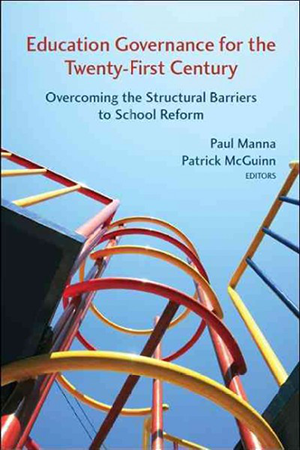
In this chapter, Roza assesses the strengths and weaknesses of what remains of the old in education governance, scrutinizes how traditional governance forms are changing, and suggests how governing arrangements might be further altered to produce better educational outcomes for children.
Student-Based Allocation to Enable School Choice

This brief explains the need for student-based allocation to enable student choice and portable funding across schools within districts.
Innovating Toward Sustainability: How Computer Labs Can Enable New Staffing Structures, and New Savings

Using wage and staffing data from states, authors project the financial and staffing implications of one innovative school model (the Rocketship lab rotation) to highlight potential impacts on the schooling workforce and total per-student spending.
Are Residents Losing Their Edge in Public University Admissions? The Case at the University of Washington

This brief examines admissions data at the University of Washington to in order to quantify the effect on admissions standards for residents versus nonresidents, who typically pay higher tuitions.
What Happens to Teacher Salaries During a Recession?

This study uses data from Seattle Public Schools to explore actual salary changes amidst rapid changes in economic context and the effect of the recession on teacher pay.
The Opportunity Cost of Smaller Classes: A State-By-State Spending Analysis

This brief provides a state-by-state context by computing the dollars at stake in marginally raising the number of students per class.
Q&A on the Chicago Teachers Contract Math

This brief examines the real numbers on the Chicago teachers contract costs.
Chicago Teacher Salaries in the Regional Chicago Context

This brief examines how Chicago teacher salaries compare in regional and national contexts.
The Sheepskin Effect and Student Achievement: De-emphasizing the Role of Master’s Degrees in Teacher Compensation
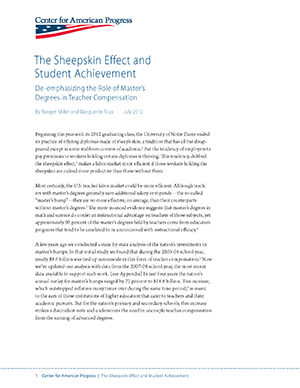
This brief dissects the nation’s sizable investment in master’s bumps as a means of highlighting policy obstacles to a more smartly differentiated compensation approach.
Rethinking State Education Finance Toward Greater Productivity

This presentation framed how state legislators might think differently about their investment in education to maximize scarce state dollars and improve student achievement.
Stretching the School Dollar: A Brief for State Policymakers

This policy brief lists fifteen concrete ways that states can “stretch the school dollar” in these difficult financial times.
The Promise of Cafeteria-Style Benefits for Districts and Teachers

While typical school district plans offer a one-size-fits-all package of benefits to employees, cafeteria plans allow employees to customize their benefits within a given cost, an option districts may want to consider.
Washington State High Schools Pay Less for Math and Science Teachers than for Teachers in Other Subjects

This paper examines the reasons why math and science teachers struggle to reach the same salaries as others, concluding that the state-wide salary schedule is in part to blame.
Curing Baumol’s Disease: In Search of Productivity Gains in Public Education
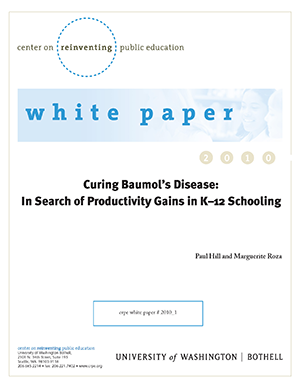
The authors discuss several areas in which labor-intensive businesses have improved productivity, but are absent in education. They conclude with a five-step agenda for finding the cure for Baumol’s disease in public education.
A False Dilemma: Should Decisions About Education Resource Use Be Made at the State or Local Level?
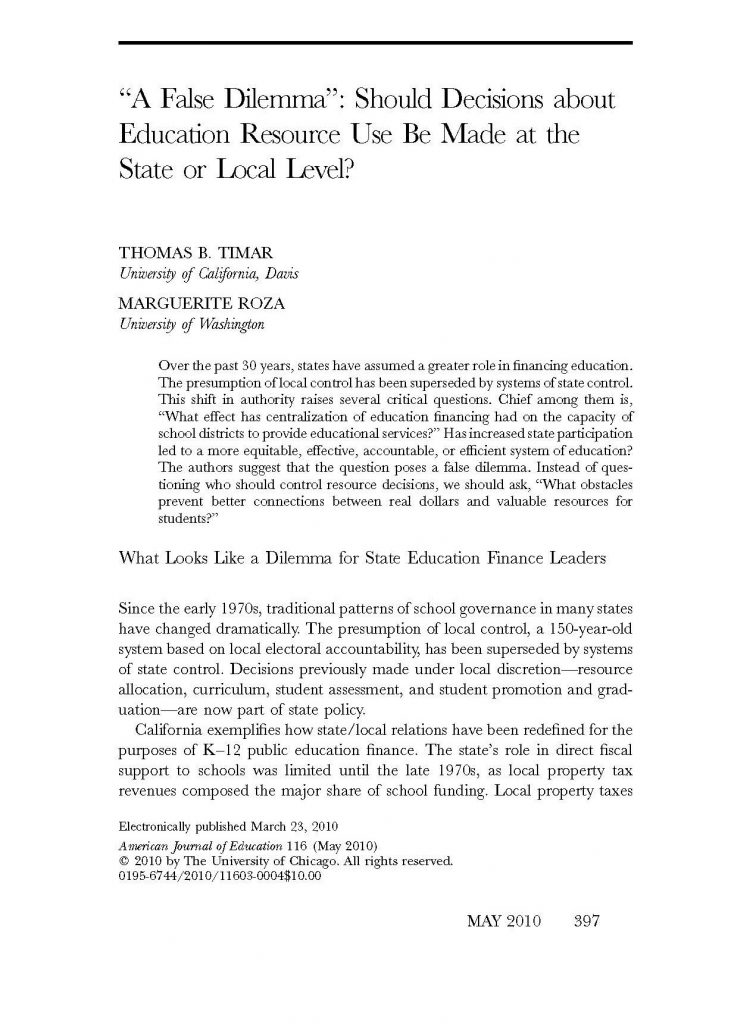
The shift in authority from the local to the state level raises several critical questions. In this paper, the authors suggest that the question should be “What obstacles prevent better connections between real dollars and valuable resources for students?”
Breaking Down School Budgets: Following the Dollars into the Classroom
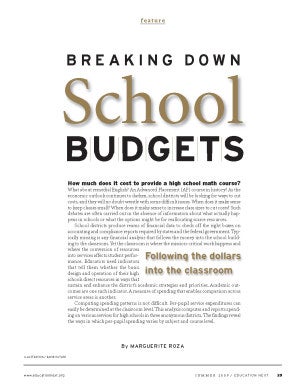
This analysis examines ways in which per-pupil spending in high schools varies by subject and course level, and demonstrates how isolating spending on discrete services can have a variety of benefits.
The Disproportionate Impact of Seniority-Based Layoffs on Poor, Minority Students

A study of California’s 15 largest districts indicates that “last in, first out” policies disproportionately affect the programs and students in their poorer and more minority schools than in their wealthier, less minority counterparts.
Educational Economics: Where Do School Funds Go?
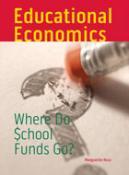
This book explains how varied funding streams can prevent schools from delivering academic services that mesh with their stated priorities and offers concrete prescriptions for reform.
K–12 Job Trends Amidst Stimulus Funds: Early Findings

This brief explores trends in K–12 education jobs—those funded through the stimulus and by other means—to answer the question of what role ARRA played in overall education employment.
Beyond Teacher Reassignments: Better Ways Districts Can Remedy Salary Inequities Across Schools

This brief demonstrates how, contrary to common worry, closing Title I’s “comparability provision” loophole would not force districts to mandatorily reassign teachers.
Have States Disproportionately Cut Education Budgets During ARRA? Early Findings

This analysis explores how state education spending has changed or will change given the application of the State Fiscal Stabilization Fund, a policy intended to stabilize state budgets and avert cuts to education.
Now is a Great Time to Compute the Per-Unit Cost of Everything in Education

This paper examines how calculating the per unit costs of what schools or districts can deliver can provide the best insight into the implications of all that spending.
Seniority-Based Layoffs Will Exacerbate Job Loss in Public Education

This brief details why K-12 school districts that lay off personnel according to seniority cause disproportionate damage to their programs and students than if layoffs were determined on a seniority-neutral basis.
What is the Sum of the Parts? How Federal, State, and District Funding Streams Confound Efforts to Address Different Student Types
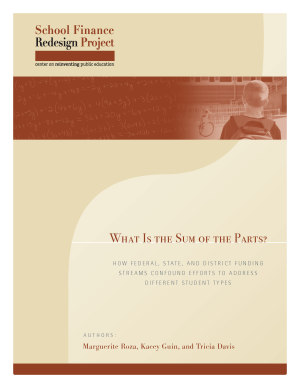
The authors demonstrate in greater detail than ever before how America’s methods of school finance work against a single-minded focus on student learning.
Understanding Student-Weighted Allocation as a Means to Greater School Resource Equity
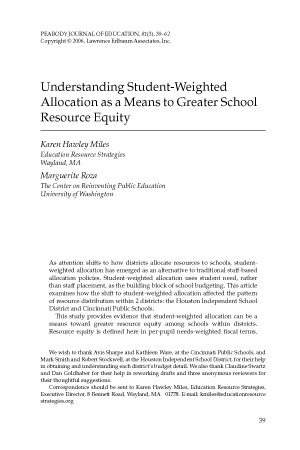
This study examines Houston ISD and Cincinnati Public Schools, providing evidence that student-weighted allocation can be a means toward greater resource equity among schools within districts.
How Districts Shortchange Low-Income and Minority Students
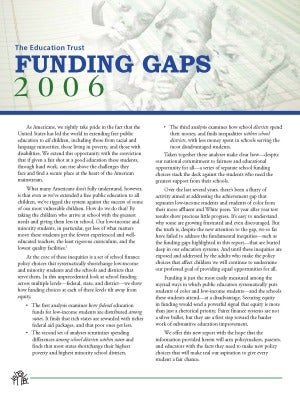
Dr. Roza’s analysis demonstrates that, despite district bookkeeping practices that make funding across schools within the same district appear relatively comparable, substantially less money is spent in high-poverty and high-minority schools.
Pennywise and Pound Foolish in Education
The authors suggest that weighed student funding would show exactly where the money is going and foster transparency and accountability for performance, thereby potentially closing the gaps in local public service quality between the privileged and the disadvantaged.
A Cost Allocation Model for Shared District Resources: A Means for Comparing Spending Across Schools
It can be difficult to assess how resources are distributed between schools, and whether every school is afforded the same opportunities to meet its educational goals. This paper addresses one key driver of spending variation between schools: shared district resources.
Leveling the Playing Field: Creating Funding Equity Through Student-Based Budgeting
This report traces Cincinnati Public Schools’ process of moving to a system of student based budgeting: funding children rather than staff members, and weighting the funding according to schools and students’ needs.
Reading District Budget Packets
This activity guides participants through reading and understanding district budgets.

